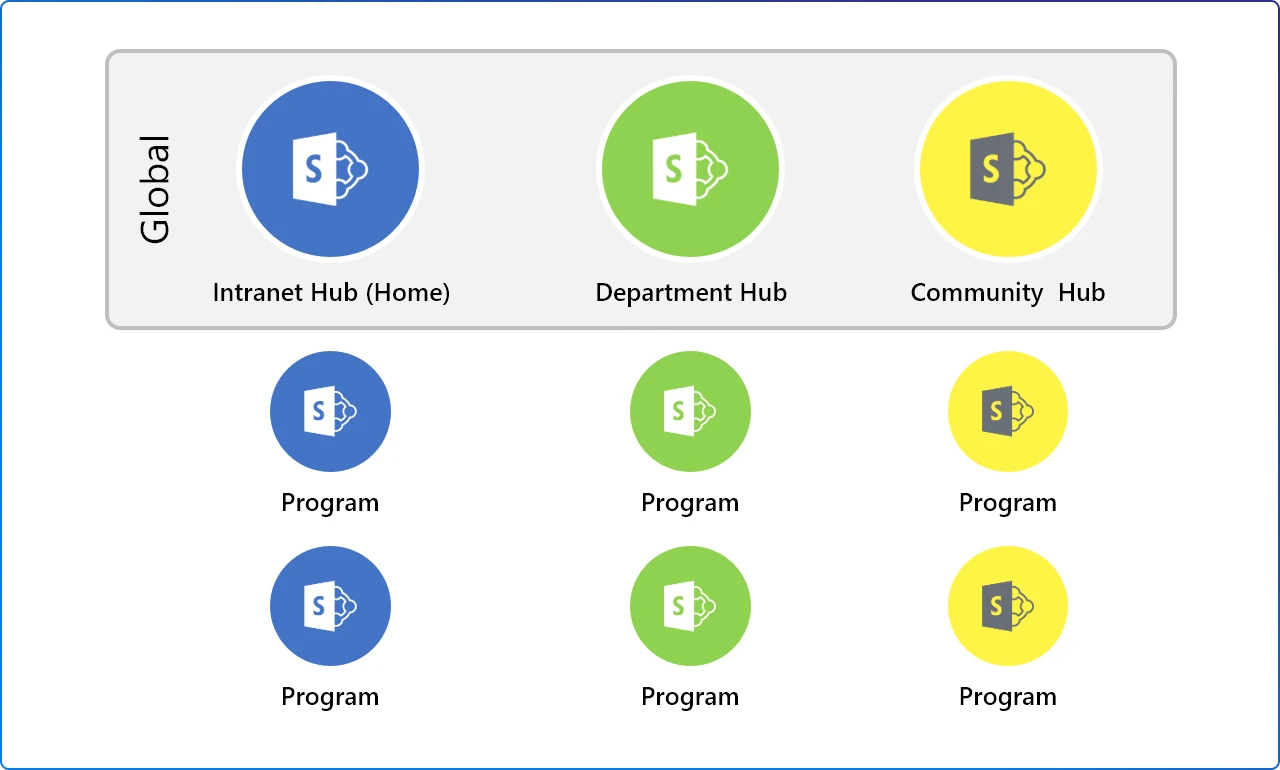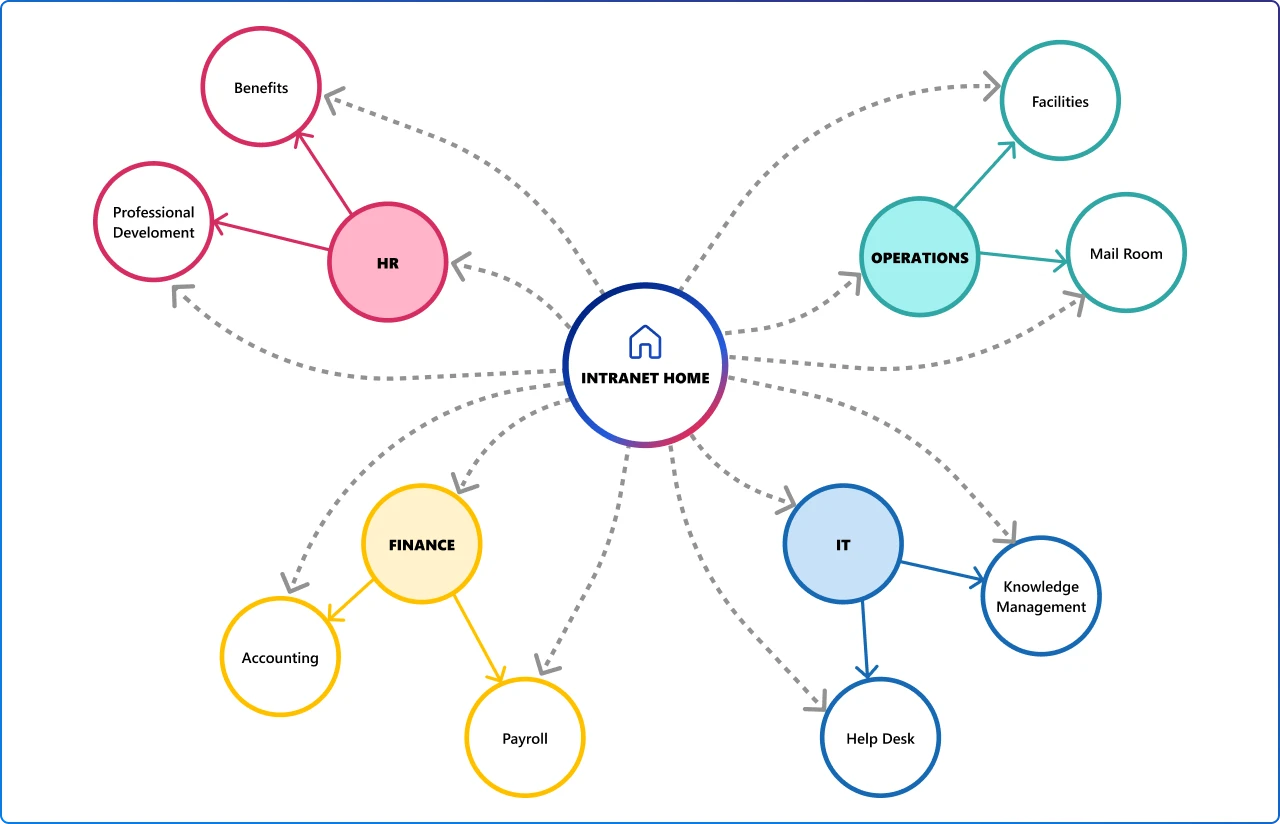
SharePoint Hub Sites are a powerful way to organize and connect related sites in your intranet. While they improve navigation and branding for end users, their real value often shines for administrators.
Let’s explore the administrative advantages, governance considerations, and potential pitfalls you should know before rolling them out.

Hub Sites promise a lot: better navigation, consistent branding, and a more connected experience. But like any tool, they come with trade-offs. In this article, we’ll take a balanced look at the benefits and limitations of Hub Sites, so you can make informed decisions about how to use them in your digital workplace strategy.
Let's take a look at the benefits of using Hub Sites in your intranet.
Adopting Hub Sites in your SharePoint environment brings numerous benefits. Here are the key benefits of using Hub Sites, many of which address longstanding challenges of classic SharePoint design.
Instead of maintaining navigation across dozens, or even hundreds of individual sites, Hub Sites allow you to manage it once at the hub level. Updates to the hub navigation propagate to all associated sites, saving significant time and reducing inconsistencies.
Hub Sites enforce theme inheritance. Set your logo, colors, and header layout once on the hub, and every associated site adopts it automatically. This eliminates the manual effort of branding each site individually and ensures a cohesive look across your intranet.
This is not just aesthetic; it reinforces to users that these sites are part of a larger whole and reduces effort in branding each site individually. In the past, achieving consistent branding across subsites or site collections was cumbersome; Hub Sites make it straightforward.

Reorganizing your intranet is easier than ever. Moving a site from one hub to another is as simple as changing its association in settings—no complex migrations required. This flexibility supports evolving organizational structures without downtime.
Like any technology, SharePoint Hub Sites have some limitations or potential disadvantages to be aware of. While the benefits usually outweigh these, it’s important to understand the trade-offs:
A site can only belong to one hub at a time. If a site logically fits under multiple categories (e.g., HR and IT), you’ll need workarounds like cross-links or web parts. This limitation requires careful planning of your hub structure.
Microsoft has recognized this and allows content from one site to be pulled into multiple hubs via web parts or linking hubs together, but the site will still have only one hub’s nav and theme. In short, hubs are not a many-to-many solution, they’re strictly one-to-many (one hub with many sites).
While security isolation is a benefit, it also means admins must manage permissions for each site individually. If you want consistent access across a hub, you’ll need to configure it manually or use the optional hub visitors sync feature.

Over-hubbing (too many hubs) or under-hubbing (too few) can create confusion. Poorly planned hubs lead to cluttered navigation and frustrated users. Admins must define clear criteria for when to create a hub and how to group sites logically.
It's been said, with great power comes great responsibility. If many site owners can associate sites to hubs, you’ll want to govern that process. Unregulated, someone might attach an unrelated site to a hub inadvertently. SharePoint admins can control who is allowed to associate sites with each hub to prevent abuse. So, one could say a hub could be “mis‑used” if not governed, though this is manageable via settings.
Only SharePoint Administrators can create or designate a Hub Site. While this enforces governance, it can slow down the process in fast-moving organizations where new hubs are needed quickly.
Hub navigation only works within the hub. For cross-hub navigation, you’ll need a global navigation strategy using the SharePoint app bar or a Home site.
If a Hub accumulates too many sites, the hub navigation bar can become cluttered or overwhelming. A flat list of dozens of links in a mega menu might be hard to use.
The admin needs to curate the hub nav carefully and perhaps not list every single associated site directly (using dropdowns or categories in the mega menu). There’s a design challenge in keeping navigation usable when a hub covers a broad area.
For administrators, Hub Sites are a game-changer for governance, branding, and scalability. However, they require thoughtful planning to avoid pitfalls like navigation overload or inconsistent permissions. When implemented strategically, Hub Sites streamline management and deliver a more cohesive digital workplace.
Hub Sites can elevate your SharePoint experience, but only if you understand both their strengths and their constraints. By weighing the pros and cons, you’ll be in a better position to design solutions that are not only functional but also future-proof.
Join Our Mailing List